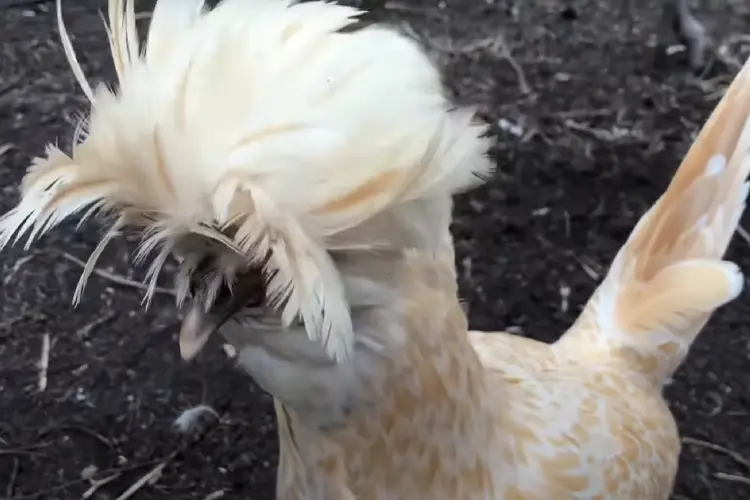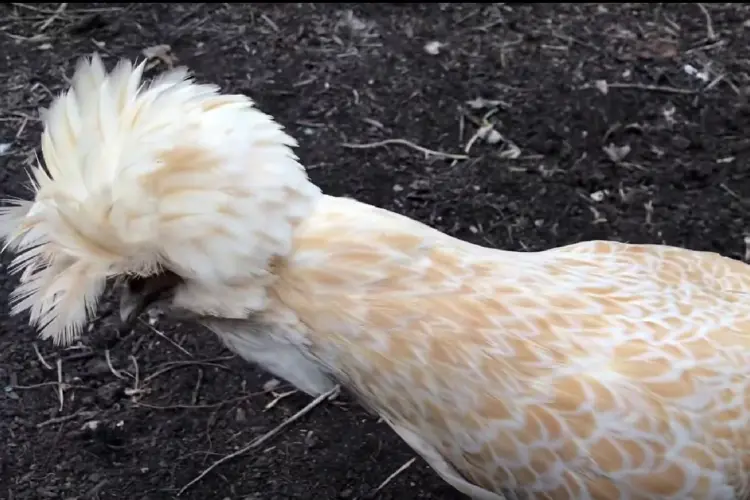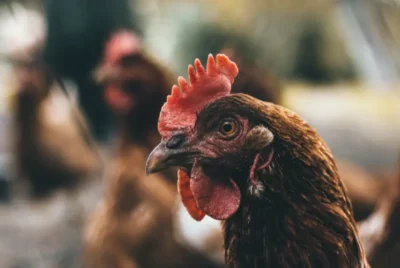A Comprehensive Guide to Buff-Laced Polish Chicken Breed
For many, the Buff-Laced Polish chicken breed remains shrouded in mystery. Some poultry keepers are hesitant, questioning their suitability for certain climates or their compatibility with other breeds. Others are uncertain about their egg-laying capabilities or the specifics of their care requirements. And let’s not forget the inevitable question: just how do you maintain that iconic crest?
Ready to learn more? Let’s dive into this chicken breed together. Whether you’re thinking of getting one, or just keen to know more, we’ve got the simple and easy-to-follow scoop right here.
Quick Stats
- Category: Standard
- Origin: Continental
- Traditional Breed: Yes
- Conservation Status: Very rare breed
- Egg Hue: White
- Egg Volume: Medium
- Laying Frequency: Good
- Nature: Friendly
- Tendency to Hatch Eggs: Rare
- Foraging Ability: Not Great
- Tolerance to Warmth: Excellent
- Tolerance to Cold: Limited
- Comb Design: V-Shaped
- Leg Appearance: Sleek
- Leg Shade: Slate to Blue
- Skin Hue: Yellowish
- Bird Dimension: Petite
- Meat Yield: Low
- Time to Full Growth: 20 Weeks
- Full-grown Male Weight: 6 Lbs
- Full-grown Female Weight: 4.5 Lbs
History of the Buff-Laced Polish Chicken
The Buff-Laced Polish chicken is a special bird with a big puff of feathers on its head and a golden, lace-like coat. It first started in Poland around the 1500s, mostly because people liked how it looked like Polish soldiers. In the late 1800s, these fluffy chicken breeds came to the USA, where people loved showing them off at events and keeping them as pets. Buff-laced Polish hens are not mainly for laying eggs, but some people like them for small farms or as backyard friends. Their different colored eggs also made them popular for selling.

Physical Appearance of Buff-Laced Polish Chickens
Buff-Laced Polish breed stand out with their striking blend of creamy white and golden buff feathers. A major highlight is their large, fluffy crest of feathers on their head, which is somewhat reminiscent of the barred rock chicken.
However, they’re distinct in their own right. Unlike the barred rock, which has yellow markings, the Buff-Laced Polish sports dark beaks, feet and dainty slate blue shanks. Their head crest is also significantly more prominent, making it almost impossible to confuse the two breeds despite some surface similarities.
What about the Buff-Laced Polish Chicks?
When they’re just little chicks, the Buff-Laced Polish displays a primarily white body adorned with dark red stripes along the neck and dark tan mark around their eyes. Some might also flaunt dark patterns on their wings.
As they grow older, they gradually develop their iconic “buff” hue. Notably, compared to other Polish chickens, these birds tend to have darker feathers in adulthood, marking their unique look. But sometimes, they can grow with two separate varieties, the mix of bearded and non-bearded Buff-Laced Polish.

Read also: Starlight Green Egger Profile: All You Need to Know
Buff-Laced Polish Chickens Egg Color and Production
The Buff-Laced Polish chicken lays medium white eggs. In terms of production, while they’re primarily kept for ornamental purposes or as pets, hens are still good, productive white egg layers. However, it’s worth noting that they’re not typically chosen as primary egg layers in a backyard flock due to their ornamental nature, but they can still contribute a decent number of eggs to the mix.

Personality of the Buff-Laced Polish Chicken
Are They Friendly?
Absolutely, the Buff-Laced Polish chickens are renowned for their friendly and affectionate nature. They are often fond of their human caretakers, displaying enthusiasm and even excitement when they see familiar faces. This friendly demeanor makes them popular choices for households, especially for those looking for companionable birds.
How Much Attention Do They Need?
While the Buff-Laced Polish is generally a laid-back and docile breed, they do enjoy receiving attention. This means they appreciate regular interactions and may become particularly attached to those who care for them.
Regular handling and socializing can further enhance their gentle nature, but like any pet, it’s essential to ensure they have their needs met, both in terms of care and emotional interaction.
Noise Level
Compared to some other chicken breeds, the Buff-Laced Polish has a moderate noise level. While they do cluck and make typical chicken noises, especially when excited or alerting their keepers of something amiss, they aren’t excessively loud or overly vocal. This makes them suitable for suburban settings or places where excessive noise might be a concern.
Do They Enjoy Human Company?
Yes, they certainly do. Buff-Laced Polish chickens are known for their sociability and often seek out human interaction. Their friendly nature, combined with their intelligence, makes them quite curious about their surroundings and the people in it. It’s not uncommon for them to follow their human caretakers around, displaying interest in their activities.
Care Guide
Feeding Requirements
Buff-Laced Polish chickens, like all poultry, need a balanced diet for optimal health. Start with a high-protein chick starter for the initial 6-8 weeks, then transition to grower feed until they begin laying eggs.

Upon maturity, switch to a layer feed to support egg production, as this feed contains the necessary calcium for strong eggshells. Always ensure they have access to fresh water, and remember that while treats such as fruits and veggies can be given, they should be in moderation.
Read also: Cinnamon Queen Chicken: A Comprehensive Breed Profile
Coop Set-up
A suitable coop is crucial for Buff-Laced Polish chickens, especially considering their distinctive crests which may hinder their vision. Ensure they have a minimum of 10 square feet in an outdoor run and 2-3 square feet per bird inside the coop.
The coop should be predator-proof, with secure latches and potentially buried hardware cloth. Include perches for roosting and nesting boxes in a quiet corner for laying. Proper ventilation is a must to keep the air fresh and the environment dry. Use chicken bedding like hemp or wood shavings for cleanliness, and don’t forget to provide a spot or container for dust baths to help them ward off parasites.
Cost of Buff-Laced Polish Chicken
The exact cost of a Buff-Laced Polish chicken can vary based on multiple factors, such as location, availability, age, and breeder reputation. Generally, a Buff Laced Polish chick can range from $5 to $15 or more when purchased from hatcheries or breeders. Mature birds, especially those of show quality or from renowned breeders, can be more expensive.

However, these prices can change due to factors like regional demand, the popularity of the breed, ship date and current market trends. If you’re considering purchasing one, it’s best to check current prices from local breeders, hatcheries, or poultry-related websites in your area.
Conclusion
The Buff-Laced Polish chicken breed is undeniably one of the most distinctive and enchanting chicken breeds in the poultry world. With its unique feathered crest and engaging personality, it’s more than just an ornamental addition to a backyard or farm. Beyond their aesthetic appeal, these birds bring warmth and companionship, proving that beauty and character can indeed coexist.
As with any breed, proper care is paramount. Armed with comprehensive knowledge about their feeding, coop requirements, and general needs, you can ensure these birds thrive and bring joy for years to come.




